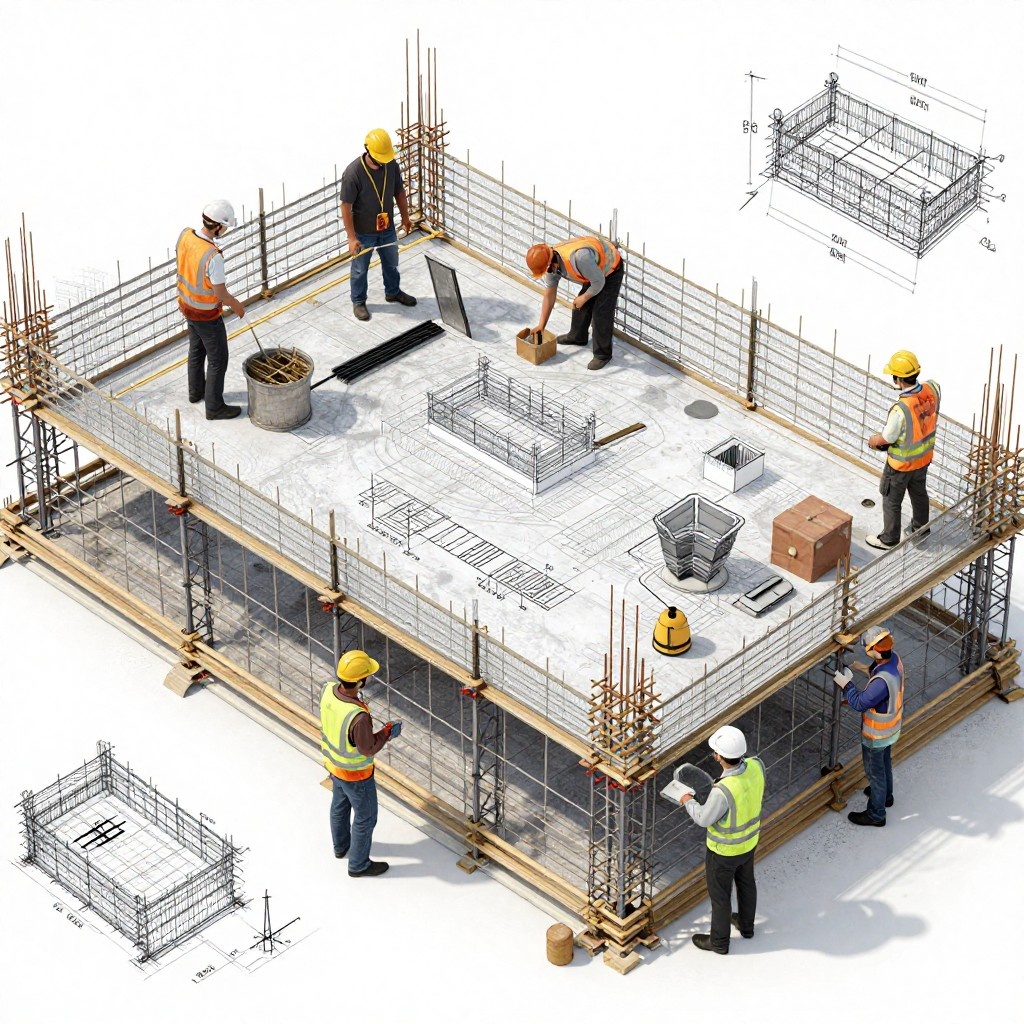Introduction
Change is the only constant in the world we live in today and in construction, BIM engaging blockchain represents a paradigm shift for activities such as Building Information Modeling, which expands the entire construction system. Blockchain, Smart cities, meanwhile, ensures open-ended recording of information and confirms protection of data.
With the combination of BIM and Blockchain, construction projects can enhance stakeholders' trust, increase efficiency, and reduce fraudulent practices. In this article, we will illustrate how these technologies work synergistically, the most significant benefits, real-world applications, and hurdles related to adoption.
What is BIM?
Constructing Information Modeling, or BIM for short, encapsulates a building’s critical design and operational elements into a digital format. BIM technology permits architects, engineers, and other construction specialists to create, manage, and analyze various digital models of a building during its lifetime.
Recommended blog: Key Features of BIM

Principal Applications of BIM in Smart Cities and Construction
Digital Twins Technology: BIM gets real time monitoring and analysis through the utilization of digital twins, which are virtual replicas of actual buildings.
Collaboration: Collaborative collaboration is achievable among stakeholders since BIM integrates data from various fields of work.
Lifecycle Management: From the first design stage of a building to its final demolition, BIM ensures proper management of resources and maximum sustainability.
Also read: The Role of BIM in Smart Cities
What is Blockchain?
According to a dictionary definition, Blockchain is a decentralized, untamperable register that records transactions for various nodes, ensuring data privacy and security. Blockchain technology was originally developed for cryptocurrency but has since been used across industries, including construction.
Applications of Blockchain Technology in Construction
Smart Contracts: Automates contract execution to reduce conflicts and enhance transparency.
Secure Payments: Faster, more secure, and irrefutable financial transactions are enabled due to Blockchain.
Lifecycle Management: From the initial design phase of a structure to its eventual demolition, BIM guarantees appropriate resource management and high sustainability levels.

Uses of Blockchain Technology in Construction
Smart Contracts: Automates execution of contracts to minimize disputes and increase transparency.
Secure Payments: Swifter, more secure, and indisputable financial transactions are possible because of Blockchain.
Data Integrity: Guarantees that construction data is circulatory, pristine, and can be verified.
The Intersection of BIM and Blockchain
The synergy between BIM and blockchain gives rise to a strong construction and smart city ecosystem. By keeping BIM data safe on the blockchain, we make sure that the data cannot be altered and is safe from unauthorized changes. This synergy leads to trust, collaboration, and enhanced operational effectiveness.
For example, blockchain can authenticate BIM models, track changes, and allow for automated checks on compliance by way of smart contracts. This eliminates errors, fast-tracks approvals for projects, and increases transparency across the lifecycle of the project.
You can also read: Integrating BIM and AR

Key Use Cases of BIM and Blockchain Integration
Smart Contracts in Building Construction Projects
Smart contracts automate the agreements between parties in a construction project, and payments are made only after particular conditions are met. This reduces disputes and saves time on project timelines.
Secure Data Sharing in Smart Cities
Smart cities rely on vast amounts of data from infrastructure, utilities, and urban planning. Blockchain ensures secure and tamper-free data sharing, which improves governance and decision-making processes.
Protecting Sensitive Urban Planning Data with Blockchain Encryption
Urban planning incorporates sensitive data that needs to be protected. Blockchain encryption protects against unauthorized access, allowing only permitted users to edit or view sensitive data.
Asset Tokenization and Digital Twins
Blockchain makes it possible for buildings and infrastructure to be tokenized digitally, enabling fractional ownership, better asset management, and smoother transactions. Coupled with BIM digital twins, this provides real-time tracking and enhanced transparency.

The Benefits of BIM and Blockchain in Urban Planning and Construction
Greater Transparency and Trust
All changes made to a BIM model are written onto the blockchain to render project records unhackable and generate trust among stakeholders.
Better Coordination Across Stakeholders
Since these models are decentralized, all parties engaged in the project will use verified and updated data, thereby enhancing coordination and decision-making.
Saving Cost and Time
This drastically reduces administrative work, project delays, and cost overruns by utilizing automated workflows and smart contracts.
Improved Security and Privacy
The backbone of construction is cybersecurity, and blockchain makes sure sensitive construction information will never be hacked.

Challenges and Solutions for BIM and Blockchain Integration
Challenges
- Interoperability Issues Absence of standardization across platforms
- Scalability Issues: Huge BIM data may. Process slowly on blockchain networks
- Regulatory Uncertainty: Compliance with existing construction regulations and laws.
- Initial Cost: The cost associated with the use of the technology, and training.
Solutions
- Open Standards Development: Advocate for industry standards that make integration easier.
- Layer-2 Blockchain Solutions: Improving the Scalability through quicker transaction processing
- Well established government and industry collaboration mechanism focusing on regulations conducive to blockchain adoption in construction
- Phased Approach: Starting with smaller pilot programs to showcase the advantages before widespread implementation.
Future of BIM and Blockchain Integration
Overall, the future of Building Information Modeling (BIM) and blockchain integration is bright, and the capabilities of these technologies are only set to improve with time, especially as new technologies like Artificial Intelligence (AI) continue to develop and mature.

Conclusion
The fusion of BIM with blockchain technology is poised to change the face of construction and smart cities by providing unprecedented levels of transparency, efficiency, and collaboration. Integrating the secure and immutable data-managed environment; blockchain delivers, together with BIM’s advanced visualisation capabilities, offers the construction sector a way to overcome long-standing challenges while creating new opportunities across the entire spectrum of growth.
FAQ's
1. What are smart contracts, and how do they work with BIM?
Smart contracts are self-executing contracts with the terms of the agreement between buyer and seller being directly inserted into lines of code. They automate payment and approval processes with BIM based projects.
2. Is blockchain adoption in BIM expensive?
Although the upfront costs for implementing smart contracts can be significant, the long-term gains in terms of fewer disputes, security, and efficiency far surpass the expenses.
3. What challenges are we facing in integrating BIM and blockchain?
Some obstacles include interoperability concerns, scalability.
4. How do BIM and blockchain support smart cities?
BIM (Building Information Modeling) enables efficient planning, design, and management of urban infrastructure. Blockchain ensures secure, transparent data sharing and transactions across smart city systems.




